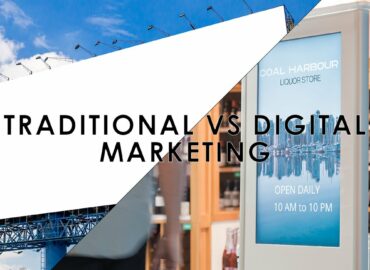Here’s how OOH is becoming one of the most quantifiable media channels.
Marketers are now able to gain reliable and relevant information. Advances in Measurement of out-of-home (OOH) advertising analytics has allowed marketers to be able to rely on new methods to track their campaign activities.
While site engagement has a direct impact on digital out-of-home (DOOH) exposure. Brand health, foot traffic, web activity, sales increase, and other factors may all be used to determine exposure. Instead of receiving individual data from each publisher and combining the findings, marketers can now simply analyse the effectiveness of their DOOH campaign across all retailers and media using programmatic technology.
How is out-of-home advertising evaluated?
The most accurate measurement is verified exposure, which compares the campaign’s reach and influence among existing consumers who have seen DOOH media against potential customers who haven’t seen DOOH media.
It’s crucial to understand the parameters of your social reach while establishing the right target audience. You must be aware of when and where an advertisement is displayed, as well as that the relevant target audience is reached. The impact of the campaign on real-world actions may then be determined by comparing exposed vs. unexposed customer behaviour. This allows us to determine whether the Ad campaign has a high or low level of engagement with new and current customers.
What can I measure?
OOH has also been improved and evolved, and it is now quantifiable across the marketing funnel. While old marketers used mass media to promote awareness, organizations now, use it to achieve a variety of KPIs, this includes:
Brand safety: Brand studies are used to analyze campaign impact on overall brand health, including awareness, contemplation, favourability, image, and recommendation.
Foot traffic: Foot traffic studies track the increase in visits to a brand’s physical locations as a result of DOOH campaign exposure. Foot traffic analysis around OOH ads are providing valuable information to marketers from a range of industries.
Web conversion and online activities: Newer to the industry and still unknown by many, brands can now measure the effectiveness of DOOH campaigns across a variety of digital KPIs. This solution is a game-changer for brands who are focused on lower-funnel and DR metrics, as OOH can now be tied back to digital performance metrics – thus becoming a direct part of the omnichannel media mix. Already leaning in are innovative marketers focused on D2C, e-commerce, retail, gaming and streaming, delivery services, and more.
Sales lift: Sales lift studies compare the influence of DOOH campaign exposure on incremental sales. These closed-loop measurement tools, which link exposure to offline purchases, give brands relevant ROI measurements and actionable insights based on consumer behavior.
Pass-back of device ID: DOOH’s most advanced feature, is a Device ID pass back that allows marketers to obtain the device IDs of those who were exposed to their DOOH campaign in a privacy-friendly manner.
Summary of DOOH measurements
The genuine ROI of out-of-home media has long been a challenge for businesses, in the recent years. Marketers can now analyse the impact of DOOH advertising on both the upper and lower funnels thanks to recent data and technological advancements. The KPIs are used to demonstrate the effects of DOOH. Out-of-home is here to stay and is more relevant and reliable than ever before, and detailed solutions exist and are being used and created through these channels.




